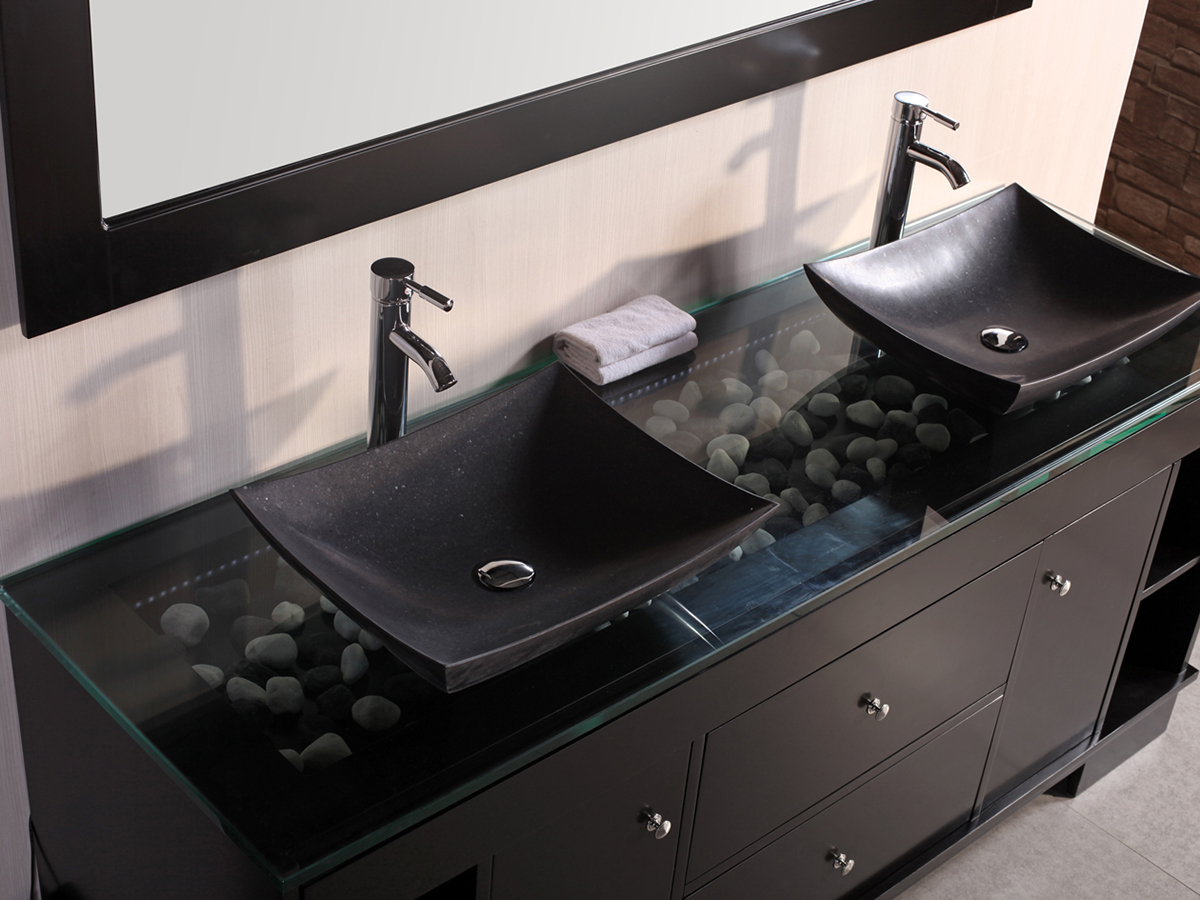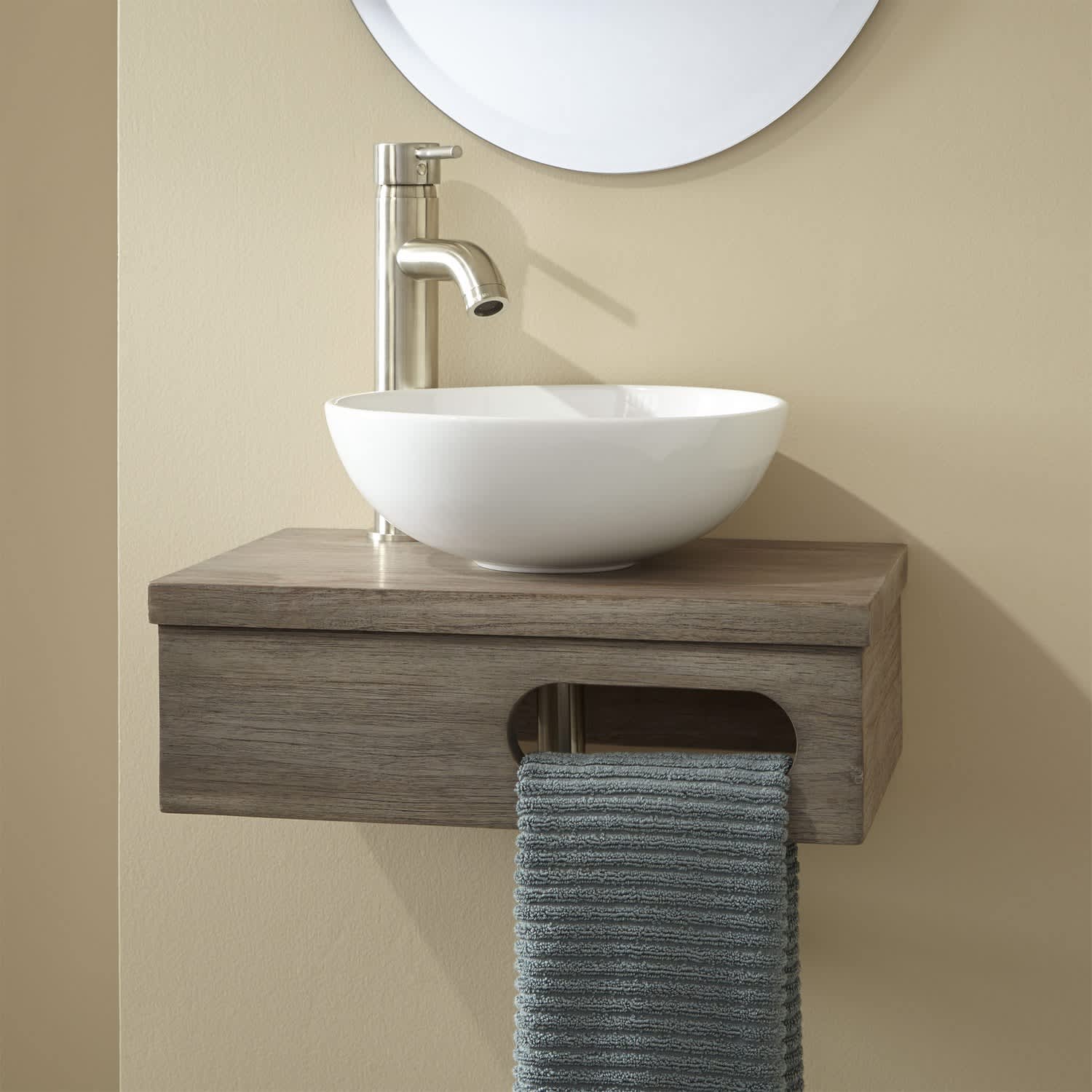Design and Styles: Floating Bathroom Vanity With Vessel Sink

Floating bathroom vanity with vessel sink – Floating bathroom vanities with vessel sinks are a stylish and functional choice for any bathroom. They come in a variety of designs and styles, from modern to traditional to contemporary. The materials used in these vanities vary as well, including wood, metal, and stone. Some vanities feature unique or innovative designs that enhance the functionality and aesthetics of the bathroom.
Floating bathroom vanities with vessel sinks are a great way to add a touch of style to your bathroom. Not only do they look great, but they also offer plenty of storage space. If you’re looking for ideas on how to maximize the storage space under your bathroom sink, be sure to check out our article on under bathroom sink storage ideas.
You’ll find plenty of tips and tricks on how to keep your bathroom organized and clutter-free. Once you’ve got your storage sorted out, you can enjoy the beauty of your floating bathroom vanity with vessel sink for years to come.
Materials
- Wood: Wood is a popular choice for floating bathroom vanities because it is durable, easy to clean, and comes in a variety of finishes. Wood vanities can be painted or stained to match any bathroom décor.
- Metal: Metal vanities are another popular choice because they are durable and easy to clean. Metal vanities come in a variety of finishes, including brushed nickel, chrome, and gold.
- Stone: Stone vanities are a luxurious choice for any bathroom. Stone vanities are durable, easy to clean, and come in a variety of colors and patterns.
Styles
- Modern: Modern floating bathroom vanities are characterized by their clean lines and simple designs. Modern vanities often feature drawers and cabinets with soft-close hinges.
- Traditional: Traditional floating bathroom vanities are characterized by their ornate details and classic designs. Traditional vanities often feature drawers and cabinets with raised panels and decorative hardware.
- Contemporary: Contemporary floating bathroom vanities are a mix of modern and traditional styles. Contemporary vanities often feature clean lines and simple designs, but they may also include some ornate details.
Unique Designs
Some floating bathroom vanities feature unique or innovative designs that enhance the functionality and aesthetics of the bathroom. For example, some vanities have built-in storage compartments or shelves. Others have built-in lighting or mirrors.
In the realm of bathroom design, where functionality and aesthetics intertwine, the floating bathroom vanity with vessel sink reigns supreme. Its sleek lines and suspended design create an illusion of spaciousness, while the vessel sink adds a touch of elegance.
If you’re seeking a vanity top that perfectly complements this modern masterpiece, consider the exquisite 27 inch bathroom vanity top with sink. Its compact size and durable construction make it an ideal choice for smaller bathrooms, while its stylish finish adds a touch of sophistication.
With the floating bathroom vanity and 27 inch vanity top, your bathroom will be transformed into a sanctuary of style and functionality.
Functionality and Storage

Floating bathroom vanities are known for their space-saving design and enhanced accessibility. By being mounted on the wall rather than standing on the floor, they create an illusion of more space in smaller bathrooms. The absence of legs or a bulky base makes it easier to clean underneath and around the vanity, ensuring better hygiene.
Storage Options
Floating vanities offer a range of storage options to accommodate various bathroom essentials. Drawers, shelves, and cabinets can be integrated into the design, providing ample space for toiletries, towels, and other bathroom items. Wall-mounted shelves or baskets can be added above the vanity to further increase storage capacity without taking up valuable floor space.
Maximizing Storage in Small Bathrooms
In small bathrooms, floating vanities with vessel sinks can be a game-changer for storage optimization. The vessel sink, which sits on top of the countertop, allows for additional storage space underneath. Additionally, choosing vanities with multiple drawers and compartments can help keep bathroom essentials organized and easily accessible.
Installation and Maintenance

Installing a floating bathroom vanity with a vessel sink involves careful planning and attention to detail. Firstly, it’s essential to ensure that the wall where the vanity will be mounted is sturdy enough to support its weight. The installation process typically begins with marking the desired height and location on the wall. Using a level, ensure that the vanity is aligned horizontally and vertically. Secure the vanity to the wall using appropriate hardware, such as screws or anchors, ensuring it is firmly attached.
For the vessel sink, it’s crucial to follow the manufacturer’s instructions for proper installation. Typically, a mounting ring or bracket is attached to the countertop, providing a stable base for the sink. The sink is then carefully placed onto the mounting ring and secured with screws or bolts. Ensure that the sink is level and properly sealed to prevent water leakage.
Maintenance
Maintaining floating bathroom vanities and vessel sinks requires regular cleaning and care. Daily cleaning involves wiping down surfaces with a damp cloth to remove dirt and debris. Periodically, use a mild detergent or cleaning solution to clean the vanity and sink thoroughly. Avoid using harsh chemicals or abrasive cleaners, as they can damage the finish. To prevent water damage, ensure that the vanity and sink are properly sealed and any leaks are promptly addressed. Regular inspection of plumbing fixtures and connections can help identify potential issues early on.
Troubleshooting, Floating bathroom vanity with vessel sink
If you encounter any problems during installation or use, here are some troubleshooting tips:
– If the vanity is not level, adjust the mounting hardware or add shims beneath the vanity to ensure it is stable.
– If the vessel sink is not secure, tighten the mounting screws or bolts.
– If there is water leakage around the sink, check the seal and tighten or replace it as needed.
– If the vanity is creaking or making noise, check the mounting hardware and ensure it is properly tightened.
– If you have any concerns about the installation or maintenance of your floating bathroom vanity and vessel sink, it’s always advisable to consult a qualified plumber or contractor.
